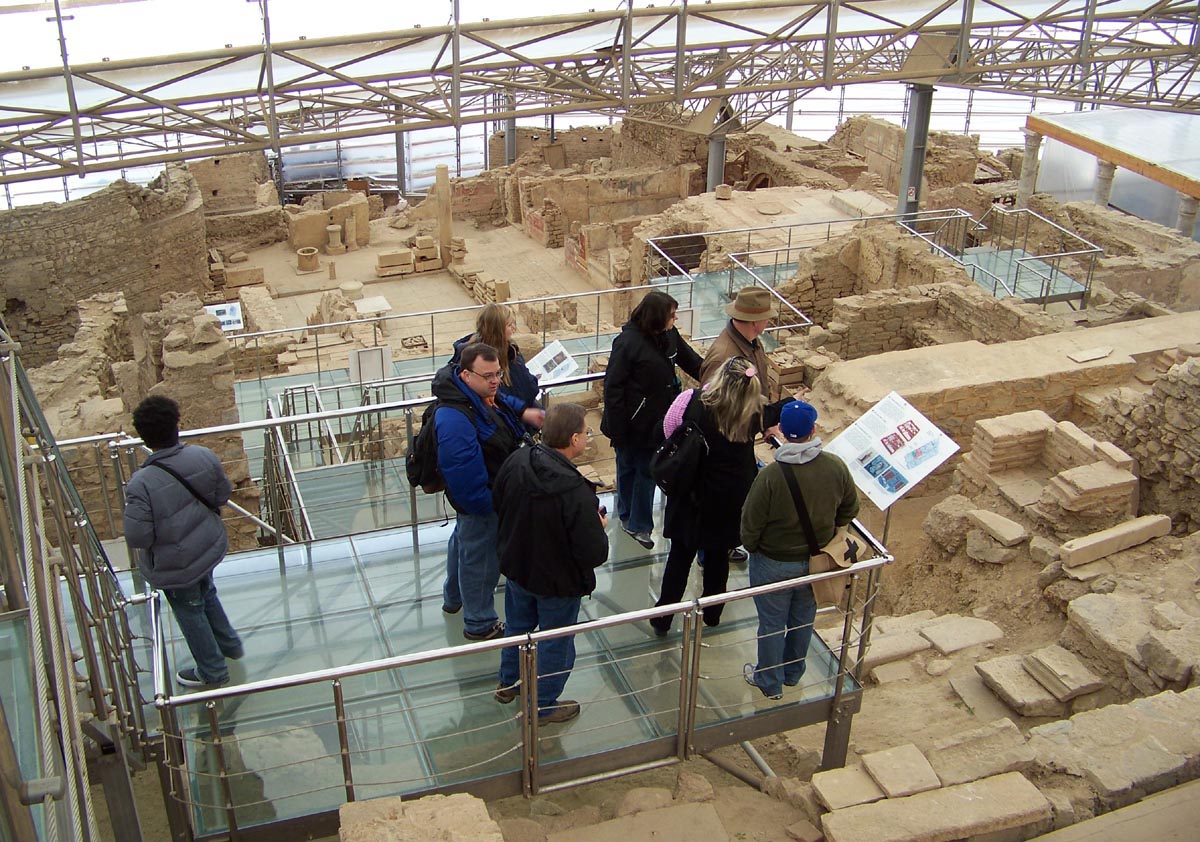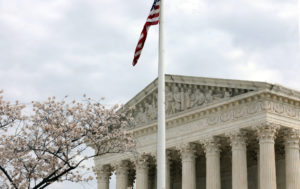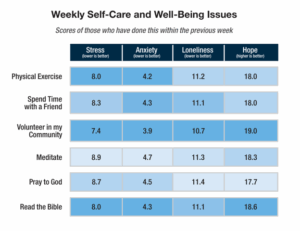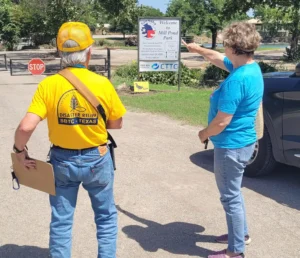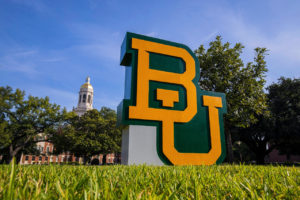
KANSAS CITY, Mo. (BP)–A group of 20 students from Midwestern Baptist Theological Seminary explored the remains of an ancient land rich with biblical significance, experienced a new culture and took part in a unique ministry.
The group of professors, students and family members participated in a study course that included visits to Istanbul and the Book of Revelation’s seven churches of the apocalypse in Turkey.
“The purpose of this trip was three-fold. First, we wanted to offer students a glimpse into the world of the first century through museum displays of Greek and Roman artifacts,” said Alan Tomlinson, a professor of New Testament and Greek at Midwestern.
“Next, we desired to give them exposure to the biblical sites relating to passages in the Pauline texts and the Book of Revelation. Finally, we hoped to give the group insight into another culture as well as have opportunities to share our faith with the Turkish people,” Tomlinson said.
The group shared the Good News with the Turkish people they encountered during two days of the January trip. Accompanied by a person who serves there fulltime, they took time to get to know shop owners, restaurant servers, hotel workers and other people they encountered.
After a time of relationship-building, usually over a cup of hot tea or coffee, members of the group presented a gift that included a Turkish Bible, a “JESUS” video and a “Creation and Christ” DVD. In several instances, students and the person they shared with exchanged e-mail addresses and Facebook information for future contact.
“It’s a huge blessing and help to us to have volunteer groups come in because when we have an opportunity to go around with other tourists, it opens doors with locals that might not ordinarily happen,” said Nick, a Midwestern graduate who lives and works in Istanbul and whose full name is not disclosed for security reasons.
“Plus, it’s an encouragement when people who are living in America still want to partner with us in our work here, especially when they have a passion to see people come to faith,” Nick said.
During the trip, the group was escorted by a guide, and for the first four days they explored such sites in the city of Istanbul as the Blue Mosque, St. Sophia Basilica and the Istanbul Archaeological Museum. They also experienced the local culture by shopping at The Grand Bazaar and eating at local restaurants.
“The shopping experience in Turkey is like nothing I would have imagined,” said Abraham Jiregna, a Midwestern master of divinity student. “Just about anything you’d like to purchase can be found at a reasonable price. And if you have better than average bartering skills, you may even do better in dealing with the friendly shopkeepers. As for the food, from the minute I arrived in Istanbul until I left, every meal was wonderful in every sense of the word.”
Once they had learned more about Istanbul, the group hit the road, traveling more than 3,300 miles to see the sites of the seven churches of the apocalypse in the Aegean and central Anatolia regions of Turkey. The first stops were at the ancient ruins of Troy and the Temple of Athena on the acropolis at Assos.
After an overnight stay, the group was off to Pergamum to see the restored Temple of Trajan, the remainders of the Great Altar of Zeus and the ancient healing center of Asclepius.
Pergamum was mentioned in Revelation 2:13-14 as a church that was both praised and criticized. The church was lauded for its faithfulness in the face of persecution and martyrdom, yet criticized because it tolerated a group called the Nicolaitans, who practiced eating food sacrificed to idols and fornication.
The next phase of the trip included two days in the ancient city of Ephesus, with a brief stop at the site of the church at Smyrna, which is in modern-day Izmir. According to the tour guide, with the modern city of nearly 3 million people being built up on top of and around the site, proper excavation of Smyrna may never take place.
Group members said the visit to Ephesus was the highlight of the trip.
“Ephesus was amazing due to the abundance of Greek inscriptions that were available to us,” said Daniel Watson, a master of divinity and master of biblical languages student. “Also, it was one of the best cities to stroll down the ancient Roman road and know that you were walking in the exact same place as the Apostle Paul.”
Watson also recalled a moment when one of the students stood on the stage at the theater in Ephesus and read from Acts 19. “I truly felt like I was transported back to the first century and that the story in the Bible truly came to life before my eyes,” Watson said.
At Ephesus, the group saw a re-creation of the city that included the Library of Celsus, temples to Roman emperors Domitian and Hadrian, a 25,000-seat theater, as well as terraced houses that showed how the wealthy members of society lived. Since marble was easily accessible and more abundant in Turkey than wood, the structures and roadways primarily were constructed of the stone.
The biblical significance of Ephesus was that its church was founded by Paul and is also mentioned in the Book of Revelation. In the Book of Acts, Paul visited the city during his second and third missionary journeys. He almost incited a riot because of his denunciation of the goddess Artemis, one of the greatest opponents of Christianity during the time. Because of the lucrative business of creating idols, local businessmen were angered over Paul’s declarations. It is thought that Paul also wrote 1 and 2 Corinthians during his stay at Ephesus.
In Revelation 2:1-7, Ephesus was described as the most important city of Asia Minor and received the first message. Christ praised the church at Ephesus for its works, labor and endurance. The church was noted for its resistance to false teachings and false apostles, but there also was criticism as Jesus rebuked them for their loss of love in dealing with others. Christ commanded them to return to the love and compassion that formerly characterized their lives.
On a day of heavy rains, the Midwestern visitors toured the ruins of Sardis and Philadelphia. At Sardis, there was a re-creation of a gymnasium complex and one of the largest ancient Jewish synagogues ever found, with a seating capacity of at least 1,000 people.
Also in Sardis was a temple to the Ephesian Artemis that is considered the fourth largest Ionic temple in the world and one of the seven largest of all Greek temples. Sardis is mentioned in the Bible in Obadiah 20, where the eventual return of Judah’s exiles to the promised land is proclaimed, and in Revelation, where they are warned to be awake lest Christ’s judgment on them “come like a thief.”
In Philadelphia, there was another example where the ruins are mostly buried underneath a modern Turkish city. The church at Philadelphia in Revelation was one of two groups of Christians who received only praise for their faithfulness to Christ.
On the final days of the trip, the group visited the ancient ruins of Laodicea and Thyatira. Laodicea was going through excavation at the time of the visit, with many new ruins and artifacts being unearthed. The city is mentioned twice in the New Testament in the books of Colossians and Revelation.
The church at Laodicea is condemned for being lukewarm, complacent, self-satisfied and spiritually bankrupt. The reference to being lukewarm is considered to be derived from the fact that the city lay between Colossae and Hierapolis.
The water at Colossae was cold because of melted mountain snow runoff and the water at Hierapolis was hot because of thermal springs, but the water at Laodicea was neither hot nor cold. The church here was the only one referenced in Revelation that received no praise.
The last site visited was at Thyatira. This ancient city was mentioned in Acts 16, where Paul and Silas met a woman named Lydia. She is considered the first Christian convert on European soil. In Revelation, Christ’s message to the church here included strong praise for its love, faith, service and patient endurance. Yet the church was criticized for its toleration of a woman symbolically called Jezebel. The Jezebel of Thyatira was accused of leading the people to be unfaithful to God through encouraging the Christians to eat meat that had been ritually offered to other gods.
“On trips like this one, students are exposed to a wealth of background information that brings the biblical text to life,” said Terry Wilder, a research professor of New Testament at Midwestern and a co-leader of the trip. “Their teaching and preaching will never be the same again after seeing places where the apostles Paul and John frequented and the early church thrived.”
IN TROUBLE, TURN TO JESUS, JOHNSON SAYS — Jerry Johnson, vice president of academic development and dean of the faculty at Midwestern Baptist Theological Seminary, delivered a message from Revelation 1:9-19 during the seminary’s spring convocation.
Johnson offered seven reasons to turn to Jesus in times of trouble, addressing areas such as handling everyday troubles, issues within the church, problems in ministry, concerns over death and not knowing what the future holds.
“In verse 10, the Apostle John is troubled, but he isn’t moping,” Johnson said. “He is in the Spirit on the Lord’s day. When we’re experiencing times of trouble, that’s the time we should be in church seeking Jesus’ help. Where are you going to find better counsel than when you’re seeking it from the One who speaks to the church?”
The Texas native, who came to Midwestern after serving as president of Criswell College in Dallas, explained that Jesus also transcends trouble.
“In the Revelation of Jesus, we see a picture of Him that we don’t see in the Gospels…. We see the power and might of Jesus in the description of having golden clothes, hair that is white like wool, eyes like a fiery flame and a voice like the sound of cascading waters.
“From His mouth comes a sharp, double-edged sword. When God speaks, it happens. When we’re troubled looking at the news, look to Jesus,” Johnson said. “He will control everything with His tongue.”
Johnson said believers have no need to fear death because Jesus has defeated it and removed the sting. He recalled a time when he was asked to visit the bedside of a dying man. He said he felt like all he did was sit there and be there for him. But as Johnson prayed and thought more about what to say, his advice to the dying man was, “Look to Jesus. Seek Jesus. Talk to Jesus. When you’re dying, you need Jesus because He is the living one and He is the giver of life.”
Believers should look to Jesus because He controls the future, Johnson said.
“Jesus sees around the corner on all your troubles. If He can know all that is happening in the world, He can certainly see what will happen to us as individuals. We have no need to be concerned about the future when we’re looking to Jesus for His guidance and direction,” Johnson said.
CHAPEL DETAILS PRESENTED — Lawrence Corley, director of Builders for Christ, revealed the details of the upcoming chapel construction project during Midwestern Seminary’s spring convocation.
Corley, an Alabama native, got his start in construction ministry when he was 35 years old at the request of the president of the Home Mission Board (now North American Mission Board) to find volunteers to help build churches so pastors and congregations could better reach people for Jesus.
In 1982, Corley’s church found a project and took 36 people to put up walls and sheetrock. Since then, Builders for Christ has grown to more than 1,600 volunteers from 82 churches and has assisted in the construction of 53 churches in 15 states.
Recounting how Midwestern became acquainted with Builders for Christ, Corley said, “Last year, our group helped build a church in Eudora, Kan. Through the media attention we received in the Kansas City Star, Dr. Roberts contacted us. A group of our core leaders met to discuss the possibility of building a chapel at Midwestern, and we all agreed that it could be a multiplying-effect project.
“By assisting with this chapel in a location where future pastors and missionaries are trained, our group unanimously agreed that with this effort, significantly more people could be reached with the Gospel of Jesus Christ.”
Corley said the project would be the group’s largest to date, with a need for around 1,500 volunteers.
“As of now, we’ve gotten over 900 people to sacrifice a week of their summer to come to Midwestern to participate, but we need more. If we get the volunteers necessary to complete the construction, we’ll have somewhere around 80,000 work hours put into the project. This equates to about $2 million in labor cost savings. If all goes well, we hope to have 70 to 80 percent of the project accomplished by Labor Day,” he said.
Corley said the cross-shaped chapel auditorium will be 60 feet wide with a transept on each side for closer seating to the stage. The space toward the back of the room will be for larger events such as graduations. The walls will be 20 feet high with a cathedral ceiling. On the chapel’s roof will be a 45-foot spire topped with an 8.5-foot cross. On the lower level of the building will be a large area for conferences that can be separated into rooms for breakout sessions, dining space and four additional classrooms.
“We’re excited about what’s going to be taking place over the next several months here,” R. Philip Roberts, Midwestern’s president, said. “Having Builders for Christ, along with the assistance of churches and organizations from all over the country, is an enormous gift from God.
“We are also privileged to have J.E. Dunn Construction Company serving as the general contractor for the project. Dunn is a nationally recognized firm and an incredible supporter of Midwestern Seminary,” Roberts said. “Finally, we seek your continued prayers that God will bless this project and that this undertaking will have the impact He desires for the future of our institution.”
The convocation service concluded with the presentation of presidential medallions and certificates to members of Linden Baptist Church in Gladstone, Mo., for their faithfulness to Midwestern students through their work with the campus food pantry.
“Everyone should know that these honorees didn’t serve our students for recognition,” Roberts said. “They did it for the love of God, Christ and the Midwestern family. To each of you, we are thankful for your efforts and deeply appreciative for all you’ve done over the years in this ministry to our students.”
–30–
T. Patrick Hudson is director of communications for Midwestern Baptist Theological Seminary.
